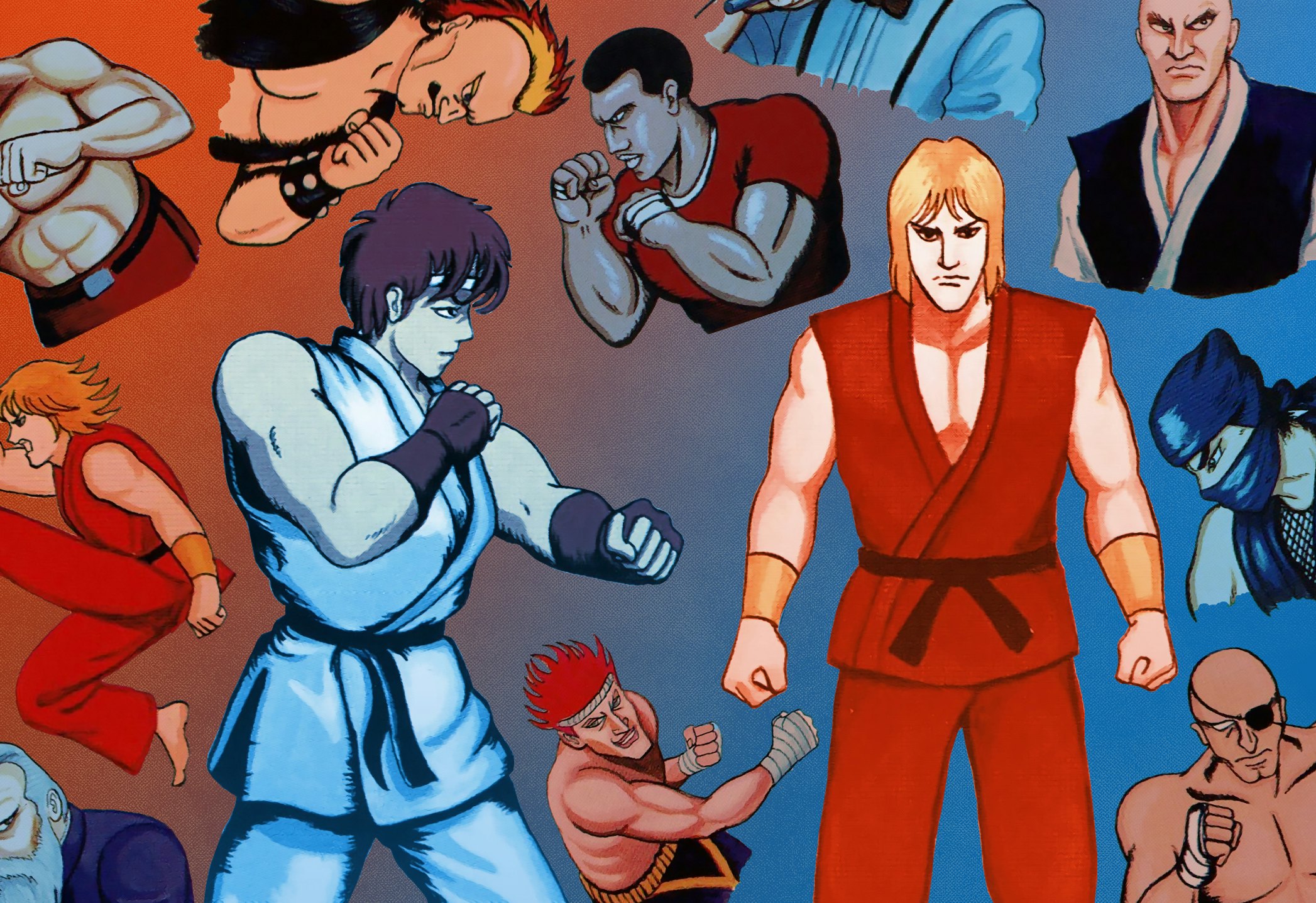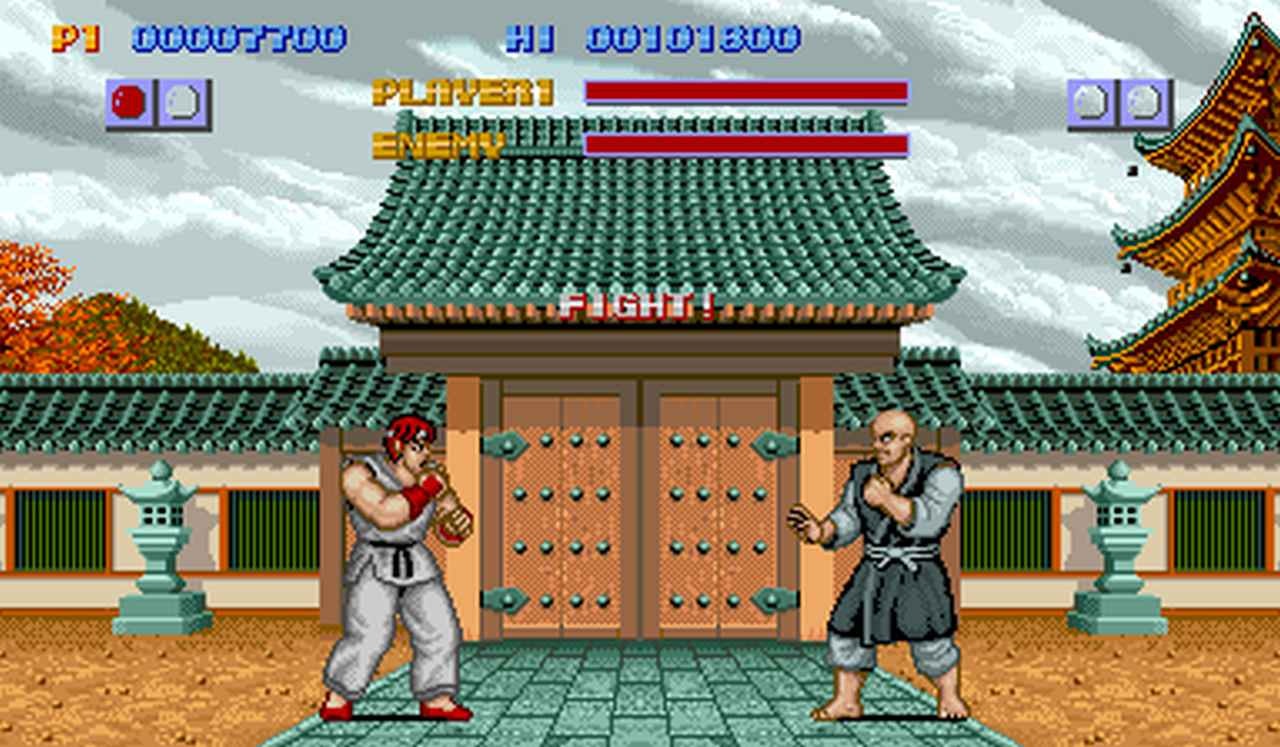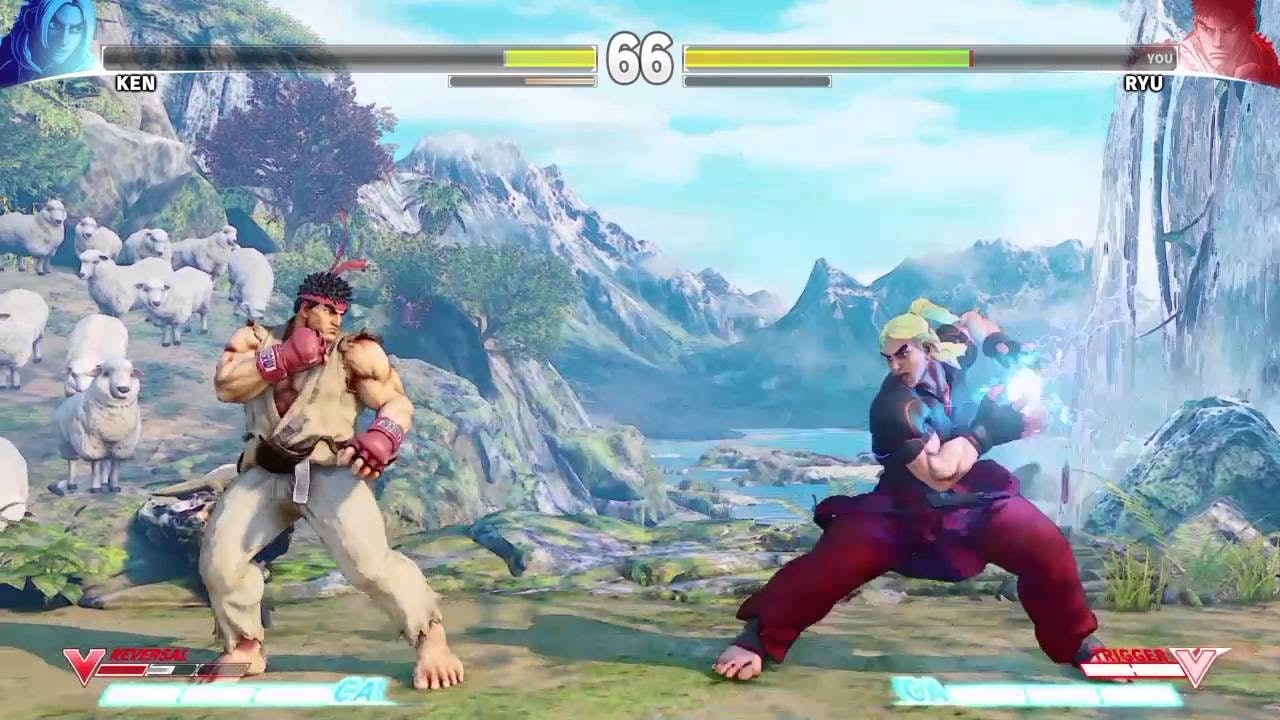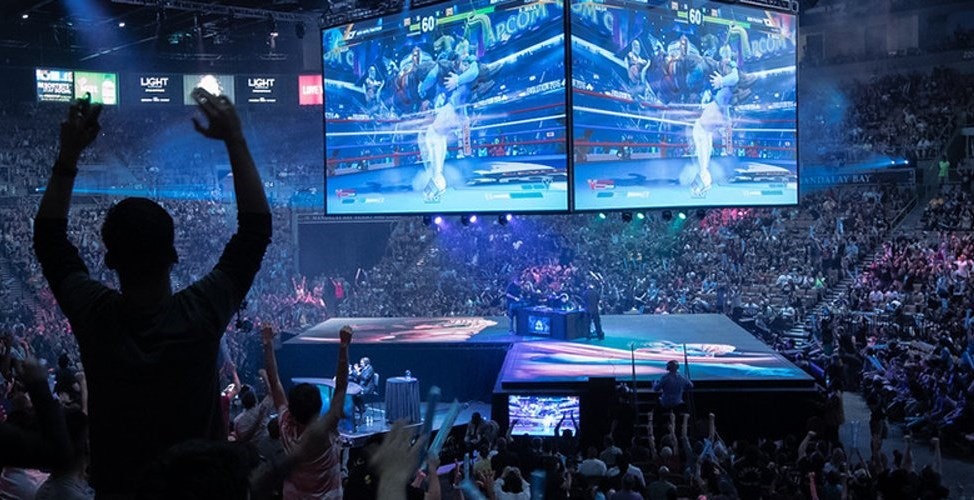
Street Fighter has always been an important part of the fighting game community. Many point to Street Fighter II as the first modern fighting game that jumpstarted a now thriving genre . As the series approaches its sixth entry and 35th year, the long roster of characters are some of the most iconic in all of gaming. But before the series could run with the success of Street Fighter II, it had to learn to walk. The first entry in the series remains a flawed game, whose value lies in what came after it. But 35 years later it is still clear that the blueprint for the fighting game genre was birthed with Street Fighter.
Rough around the edges

On August 12, 1987, arcade goers in Japan got their hands on Street Fighter for the first time. What they found was an attempt at refining the gameplay loop of director Takashi Nishiyama’s earlier side-scrolling beat-em-up Kung-Fu Master. The key change made in Street Fighter was that it cut out everything from a beat-em-up except the boss fights. Similar to how FFXIV raids cut out the pointless mob phases of other MMOs to focus on the challenging combat of a boss, Street Fighter was doing the same thing in 1987. These matches would occur over three rounds of 30 seconds.
While the game is messy and unrefined it created a list of mechanics that would become the defining elements of any fighting game. The player had an eight-way joystick for movement and two buttons for punching and kicking. These action buttons were originally analog and allowed for players to refine the power of an attack by how hard they pressed down. Later arcade versions replaced this with a six-button layout, separated into three power levels. This remains the norm for fighting game controls today.

It was also the first game to create combo moves. Hurricane Kick, Dragon Punch, and Psycho Fire were special moves that could only be done if the player inputs the correct string of button presses in quick succession. The player was never told about these special moves and would have to discover them through trial and error.
These gameplay innovations helped show what a fighting game could be, but the thing that truly made this the precursor to the Street Fighter franchise was the introduction Ryu and Ken. Much of Street Fighter can be boiled down to the rivalry between these two fighters who are basically the same but with different colored clothing and hair. Ryu served as the playable character in Street Fighter, but if a second player joined the game for some player-on-player combat, they took the role of Ken. Thus, a legendary rivalry and franchise began.
A lasting legacy

The original reception for the arcade release of Street Fighter was that the game was good, but not great. It would be ported to other consoles over the next couple of years, including a more favorable PC Engine version. But then came Street Fighter II in 1991.
It is not an exaggeration to say that Street Fighter II was a global phenomenon. The refined gameplay and larger character roster focused on the complex button input system as well as the ability to play head-to-head against another player. This led to arcades becoming hotspots for people playing the game, creating dedicated spaces for what would become the modern fighting game community.
Street Fighter II would be iterated upon over the next several years, something the series continues to do, with the final arcade version being Super Street Fighter II Turbo in 1994. With the arcade scene being so popular eventually people decided they should hold tournaments. In 1996 ‘Battle by the Bay’ was started as a Street Fighter II tournament in California. This would grow to become the Evolution Championship Series, the premier fighting game tournament in the world.
In the time since Street Fighter II was released the fighting game genre expanded to include Mortal Kombat, Smash Bros., and many entries in the genre from franchises like Persona. With the imminent release of Street Fighter 6 in 2023 the franchise that started it all remains one of the top dogs. But at its core, it still shares the same DNA that made the original Street Fighter full of potential. Even if it wasn’t the best game ever, it still paved the way for everything that came after. Why be a good game when you can have one of the greatest legacies in gaming?







